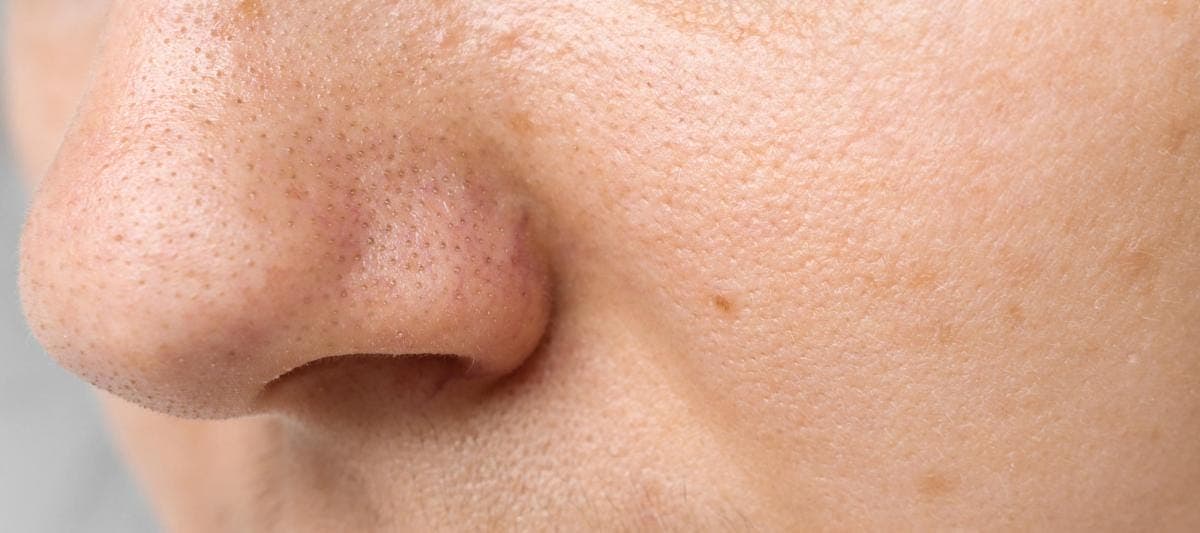Skincare
Clear and Smooth: A Guide to Reducing Large Pores and Sebaceous Filaments on Your Nose
If you click on links we provide, we may receive compensation.
When you look in the mirror, does the texture of your nose grab your attention for all the wrong reasons? You’re not alone! Large pores and sebaceous filaments are common skincare concerns that affect people of all ages. In fact, studies show that 60% of individuals are dissatisfied with their pore size and skin texture, according to research published in the Journal of Cosmetic Dermatology. But here’s the good news: with the right approach, you can minimize their appearance and achieve smoother, healthier-looking skin.
Let’s explore why these issues happen and, more importantly, what you can do about them.
What Are Large Pores and Sebaceous Filaments?
Before we talk solutions, it’s essential to know what we’re dealing with. Large pores are visible openings on the skin that release oil and sweat. They’re often more prominent on the nose and T-zone because these areas produce more oil. Genetics play a significant role here—if your parents had large pores, chances are you might too.
Sebaceous filaments, on the other hand, are natural components of the skin. They’re tiny, tube-like structures in your pores that help guide sebum (oil) to the surface. While sebaceous filaments are normal, they can become more visible when there’s excess oil production, leading to a grayish or dark appearance, especially on the nose.
The Science Behind Their Visibility
Why do pores and sebaceous filaments sometimes look worse? It boils down to a combination of factors:
- Excess Oil Production: Hormonal changes, stress, and even diet can ramp up oil production, making sebaceous filaments more noticeable.
- Loss of Skin Elasticity: As we age, collagen production decreases, causing pores to appear larger.
- Clogged Pores: Dirt, makeup, and dead skin can accumulate, stretching the pore and making filaments darker.
- Sun Damage: UV exposure breaks down collagen and elastin, exacerbating the problem.
Understanding these factors is key to tackling the issue effectively.
Gentle Cleansing Is Your First Line of Defense
If you’re scrubbing your face aggressively in hopes of shrinking your pores, stop! Over-cleansing can strip the skin of its natural oils, prompting it to produce even more sebum. Instead, use a gentle cleanser twice a day. Look for formulas with salicylic acid or benzoyl peroxide, as these ingredients penetrate deep into pores to dissolve oil and dirt.
Consistency is crucial here. Skipping cleansing, even for a day, can allow oil and debris to accumulate, undoing your progress.
Exfoliation: A Key Step for Smooth Skin
Exfoliation is like giving your skin a fresh start. It removes dead skin cells that clog pores and make sebaceous filaments more visible. Opt for chemical exfoliants containing alpha-hydroxy acids (AHAs) or beta-hydroxy acids (BHAs). These ingredients work to dissolve the bonds between dead skin cells, revealing brighter and smoother skin underneath.
Limit exfoliation to two to three times a week to avoid irritation. Overdoing it can damage your skin barrier, making your pores appear even larger.

Hydration Is Non-Negotiable
Contrary to popular belief, oily skin needs hydration too. When your skin is dehydrated, it can overcompensate by producing more oil. Use a lightweight, non-comedogenic moisturizer to maintain balance. Ingredients like hyaluronic acid can hydrate without clogging pores, leaving your skin feeling plump and refreshed.
The Role of Clay Masks and Retinoids
Clay masks are a fantastic way to draw out impurities and absorb excess oil. Use them once or twice a week for best results. Bentonite and kaolin clays are particularly effective at reducing the visibility of sebaceous filaments.
Retinoids, derived from vitamin A, are another powerhouse ingredient. They speed up cell turnover, preventing dead skin and oil from clogging pores. Prescription-strength retinoids may be more effective, but over-the-counter options like retinol can also deliver noticeable results with consistent use.
Lifestyle Changes That Make a Difference
Skincare products are only half the battle. Lifestyle changes can have a profound impact on your skin’s appearance.
- Diet: Foods high in sugar and dairy have been linked to increased oil production. Opt for a diet rich in fruits, vegetables, and omega-3 fatty acids to promote healthier skin.
- Stress Management: Chronic stress triggers hormonal changes that can exacerbate oiliness. Techniques like meditation and regular exercise can help.
- Sunscreen: Protect your skin from UV damage by using a broad-spectrum sunscreen every day. This prevents collagen breakdown and maintains skin elasticity.
When to Seek Professional Help
If you’ve tried everything and still feel self-conscious about your pores and sebaceous filaments, consider consulting a dermatologist. Treatments like chemical peels, microdermabrasion, and laser therapy can deliver dramatic results. These procedures remove damaged layers of skin, stimulate collagen production, and minimize pore size.
Patience and Consistency Pay Off
Reducing large pores and sebaceous filaments isn’t an overnight process. It requires a combination of effective skincare, healthy habits, and, most importantly, patience. Remember, your skin is unique, and it’s okay to experiment until you find what works best for you. With time and consistency, you’ll notice a visible improvement in your skin’s texture and clarity.




